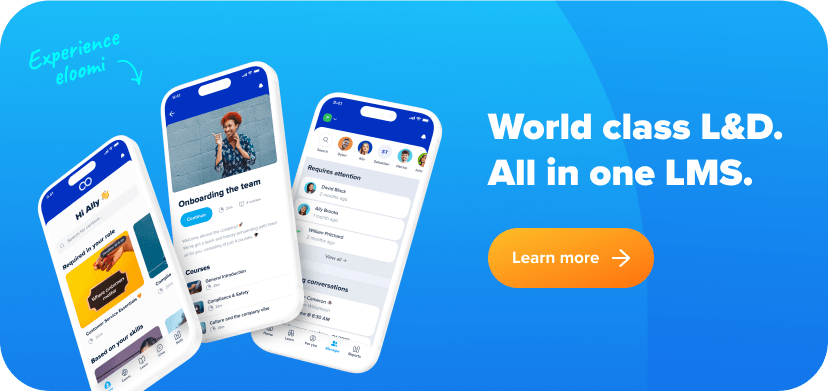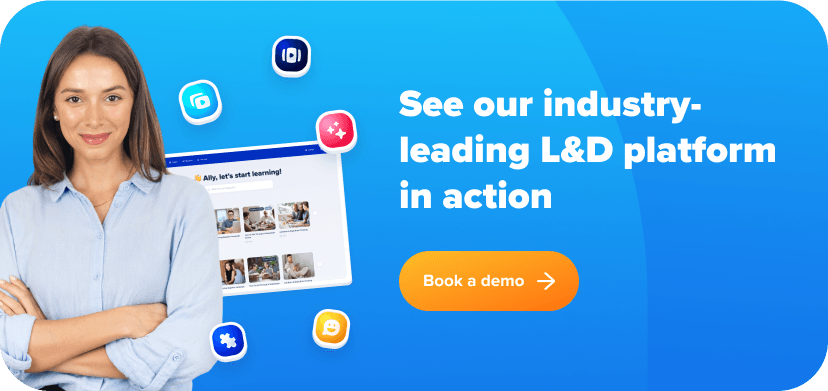How often do you hear customers say that they don’t know how to access a service, or aren’t sure where to get started? The problem here doesn’t lie with your customers, or even your support team.
Even if you pride yourself on excellent customer service and support, this same scenario is a challenge seen by scaling organizations all over the world because when your customer base grows, cracks in your communication are magnified a hundred fold.
Sound critical? For growing companies, it’s essential to offer seamless support whilst eliminating the bottlenecks that slow down teams and frustrate customers. So how do we get there? For many, the answer starts with the customer training academy.
What is a customer training academy?
A customer academy is a training platform built to educate customers about your business, product or service. It helps a customer to learn about your organization, how to use its services, and how doing so can make their life easier.
In the past, customer training has relied on dedicated support teams, careful product documentation and ever-updated help articles. If you’ve been doing it well, that’s meant thousands of hours spent just to keep everyone externally (and internally) synced with the latest updates.
So, what’s the problem? Time spent on complex processes bottlenecks your growth. Which is why growing companies turn to Learning Management Systems (LMS) or Learning Experience Platforms (LXP) to automate and scale processes that drive customer satisfaction.
Powered by an LMS or LXP, a customer academy acts as an online learning platform where users can access tailor-made courses to guide and introduce them to your company and services. This can range from a friendly welcome kit to share the basics on who you are and how to use your services, or go all the way up to in-depth product training if you need an easy way to share complex material.
Want to see how it works? Read how Monitor ERP saved 2-3 days per project with their customer academy.

Why you need a customer training academy
There are countless benefits to focusing on great customer training. According to Forbes, loyal customers are 5x more likely to purchase again and 4x more likely to refer a friend to the company. But the benefits of customer training aren’t just commercial.
Here are just a few reasons why great customer training should be your priority:
Deliver the experience your customers deserve – Getting to know a new tool or service should be seamless. With a customer academy, you have complete control of a consistent customer experience through tailored training courses, learning plans, and automated enrolment.
Reduce churn and drive adoption – Ensure the best possible onboarding experience and single-channel communication to support customers when they’re most likely to churn.
Understand your customers – Get to the heart of your user experience with real-time reporting on engagement, course completion, user surveys and feedback.
Raise your customer lifetime value – Track your customers’ progress through training and explore opportunities to upsell and expand with a unified channel to educate and communicate with your customers – all while driving long-term engagement.
Reduce customer support costs – With consistent onboarding and easily accessible materials, you’ll save your support teams time and energy solving tickets so they can focus on the tasks that matter.
Position yourself as a brand leader – A customer academy helps you stand out from the competition with a dedicated platform to train your users, drive your brand and deliver an exceptional customer experience.
Drive customer loyalty – A customer academy makes great training the status quo. When it’s easier for your audience to access resources, check updates, and self-direct their learning, rather than chase support staff, it’s easy to deliver a consistent experience that drives customer loyalty (while saving your resources for the customers that need it!).

How to build a successful customer academy
Once you’re decided on building your customer academy, figuring out where to start can be tough. But, no worries! We’ll walk you step by step through how to make your customer academy a success. From setting goals to measuring and boosting its impact, we’ve got you covered.
1. Set your goals
Start out by defining the goals and objectives you hope to achieve. This will set you up to track results later on, while giving you the focus to start a successful customer academy that you can grow and expand upon.
Your goals might include speeding up customer onboarding, reducing support requests, expanding product adoption, or increasing customer engagement.
If you struggle to prioritize an initial goal, start with your customers. Read through feedback, send out surveys, and talk with your customers to identify the pains a customer academy could solve. Knowing your audience, and the problems they experience, is key to making your customer academy a success.

2. Create engaging content
Even with existing training, it can be a challenge to create dedicated content for your customers.
A learning platform like eloomi can get you started with ready-made learning content.
But if you’re looking to create your training from scratch, or build on existing content, here are our best tips and tricks for planning training that can support your customers from A to Z:
Plan your structure: To create a smooth training experience for your customers, start by defining the topics you need to cover. Then, break it down into manageable chunks by step or topic. You could start with a welcome message and thank you, followed by an introduction to the company, and finally a product or service tutorial. Start with foundational knowledge before diving into anything advanced – but be sure to write down those ideas for later.
Mix your media: One way to keep your customers engaged is to use a variety of media formats. When planning your content, consider how you might use a mix of content types such as video tutorials to give product demos, interactive quizzes to check progress and reinforce key points, and structure step-by-step tutorials with detailed instructions, images and illustrations to guide your customers.
Keep it practical: Your customers want clear, actionable advice. Make sure your training enables customers to apply what they learn by providing practical examples. Offer templates, checklists, or downloadable resources that customers can utilize in their day-to-day, and address common challenges or FAQs so you can solve queries before they arise.
3. Test it out
Once you have your content and concept ready, create a prototype and test it out with a select group of customers or an internal test group. You can easily set this up with a free trial of an LMS or LXP.
Here’s how to ensure solid testing for your customer training:
Identify Pilot Customers: Select a group of customers who represent your target audience. Engage them early in the process to gain insights into their specific needs and preferences.
Develop a Prototype: Build a sample version of your customer academy, including a selection of content and learning resources. Ensure it aligns with your goals and objectives.
Gather Feedback: Engage with the test group and gather their feedback through surveys, interviews, or focus groups. Consider their suggestions, pain points, and recommendations to refine your customer academy.
Once you’ve gone through testing and revisions, share your findings with stakeholders and revisit the goals you set when you first started planning your customer academy. If all looks good, you’re ready to launch. Set a date in the calendar, share the news with your customers, and be ready to welcome them to the platform!
Remember, The first version of your customer academy won’t have all the features or courses you’ll want to add eventually. Stay focused on your initial goals and keep notes for future expansion so you can check them off as your academy grows!
4. Measure and grow
Once your customer academy is launched, don’t stop there. With a learning platform, you’ll be able to track key metrics to see how users are engaging with your content.
Plus, you’ll want to keep a close eye on your KPIs to monitor the impact of your customer academy, whether you’re tracking support ticket reductions or gathering qualitative user feedback.
Make sure to take time to assess the impact of your customer academy and act on the feedback received. With the academy launched, it will be easy to use data to make iterative improvements, update and expand your content based on company roadmaps and customer needs.
If you’re not sure where to start, you can assess the impact of your customer training by tracking these key metrics:
- Engagement: How many people are engaging with your content and materials?
- Course completion: Is your content valuable? Does it help customers feel prepared to use your product?
- Knowledge tests: Are customers completing quizzes on their first try? Are they failing tests on certain courses?
- Time spent: How much time are users spending on training after the launch of your customer academy?
- Feedback: What are customers saying about your training academy?
Once you’ve got the data to drive decisions, it’s a clearer (and simpler) path to customer success.
Ready? Launch your customer training today
If you’re exploring a customer training academy to grow your business, help your customers, and give your support team some support of their own, I hope this article has given you useful tips to get started.
Of course, you can speed up the launch of your customer training academy by getting in touch to see how eloomi can support your training goals. We know the importance of great customer service for a growing audience, so contact us to explore seamless learning and development.

FAQ
What is customer training?
Customer training is the process of educating customers about your organization, product, or services. Its goal is to provide customers with the knowledge and skills they need to achieve their goals and get the maximum value from your product or services.
What is a customer training academy?
A customer academy is a dedicated platform for customer training, consisting of courses to educate customers in how to use your product or services. Customer academies are typically created with an LMS or LXP to create an easily accessible digital platform.
How do I create customer training?
Customer training is usually made with the help of an LMS or LXP. Great training will focus on communicating key topics such as a company introduction, product training, and answers to frequently asked questions.
How do I build a customer training academy?
You can easily launch a customer academy using an LMS or LXP. Plan out the launch of your academy by first setting the goals you aim to achieve, creating content, testing a prototype, and tracking your results.
How do I measure the success of customer training?
With an LMS or LXP you can measure the impact of your customer training by tracking key metrics such as: engagement, course completion, time spent, quiz results and user feedback.






